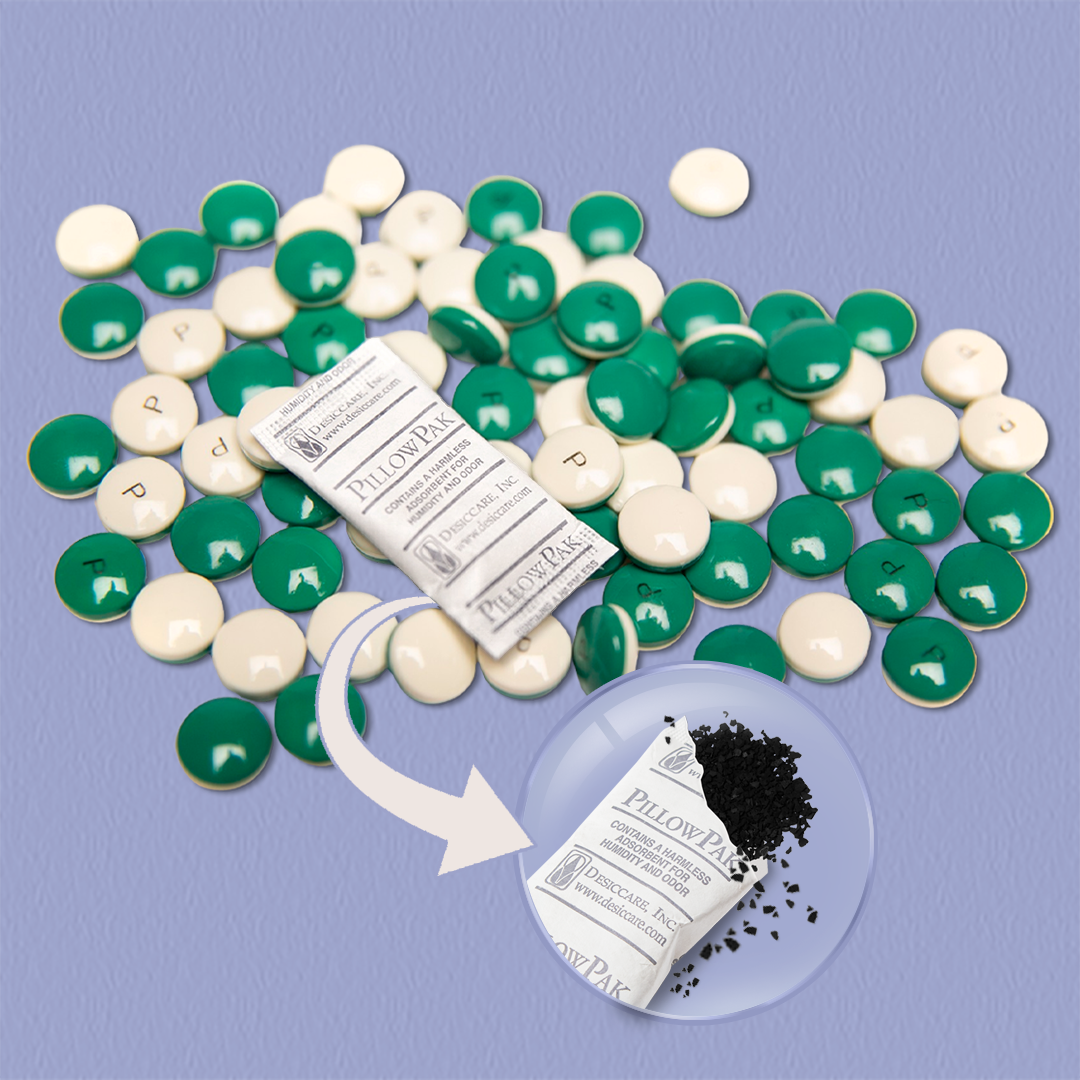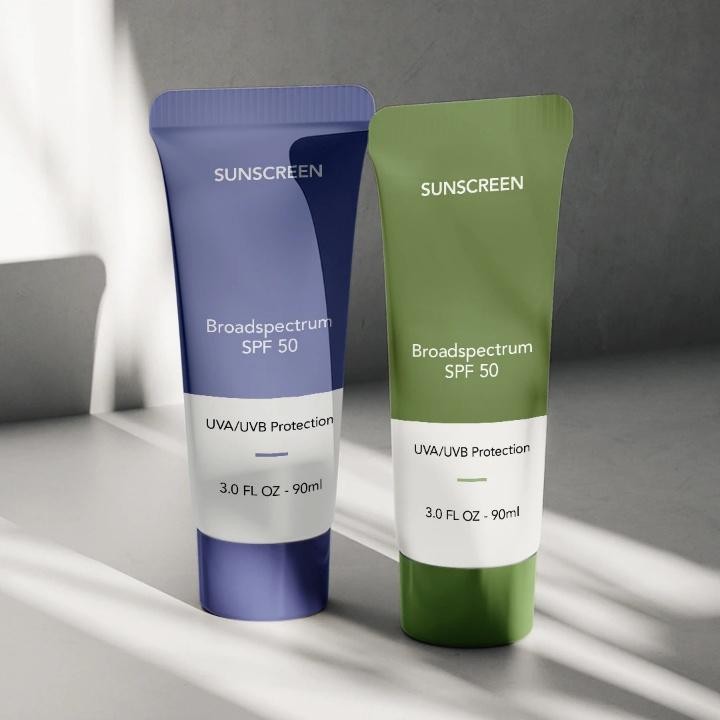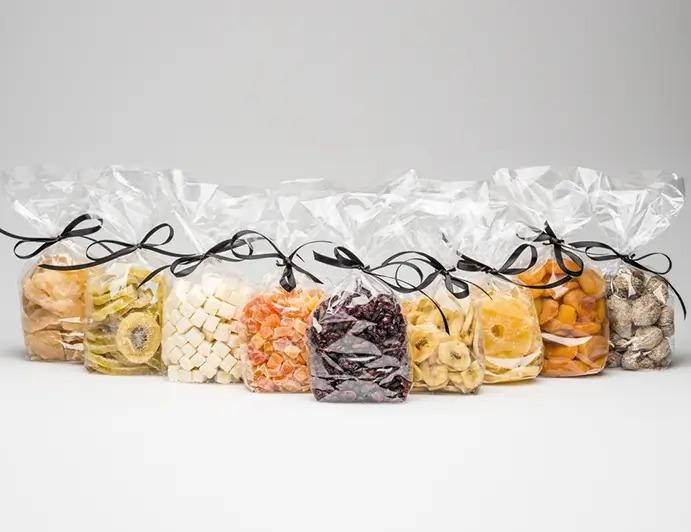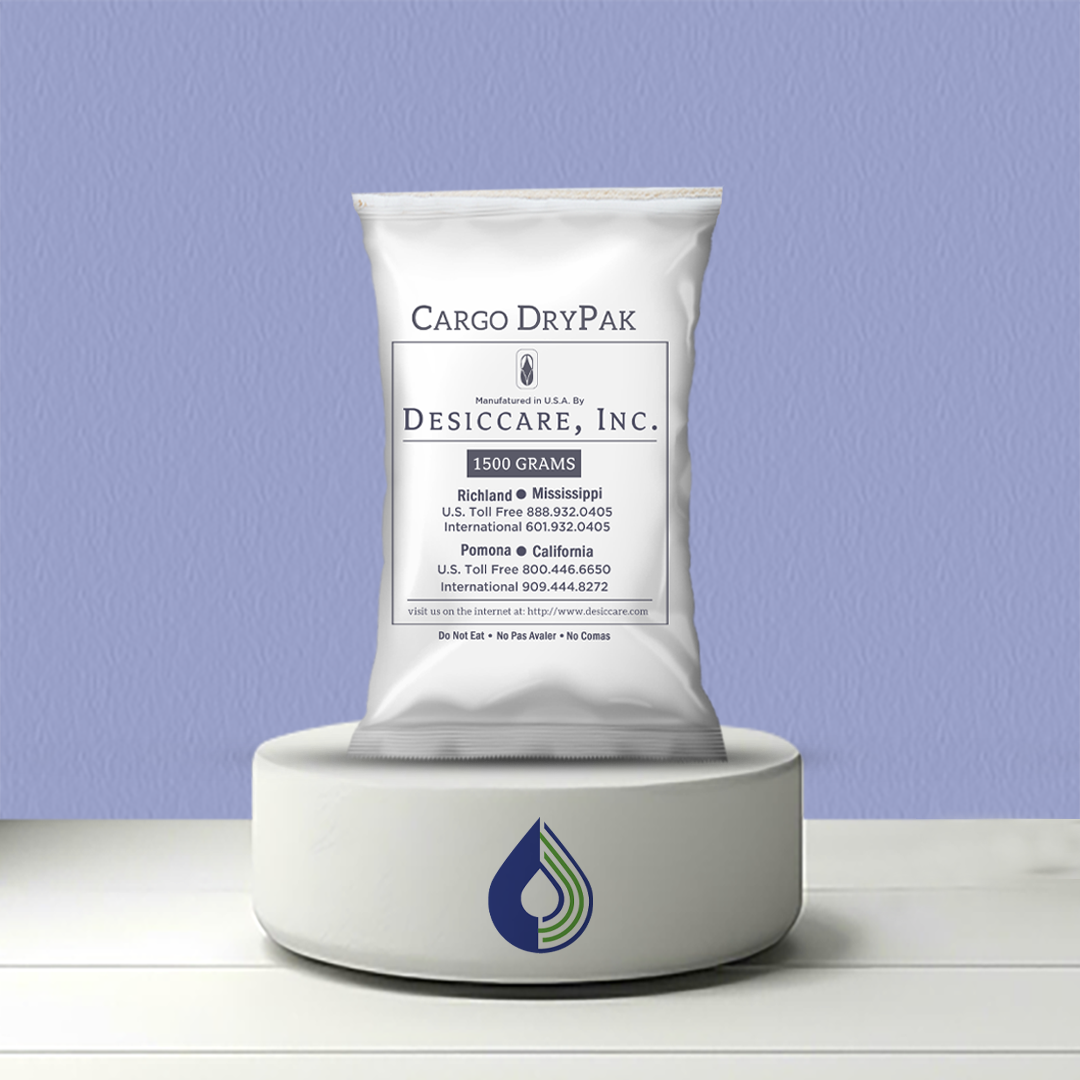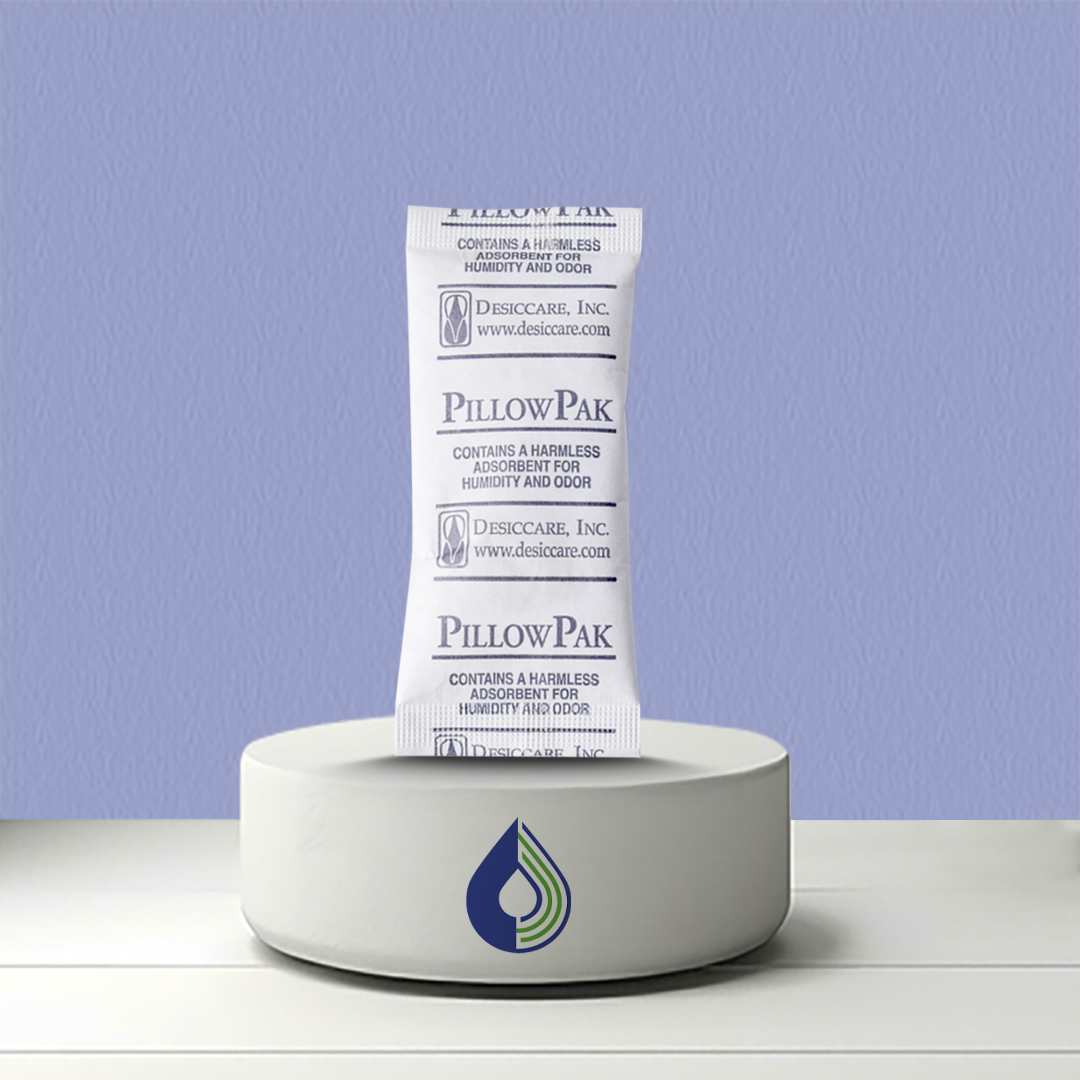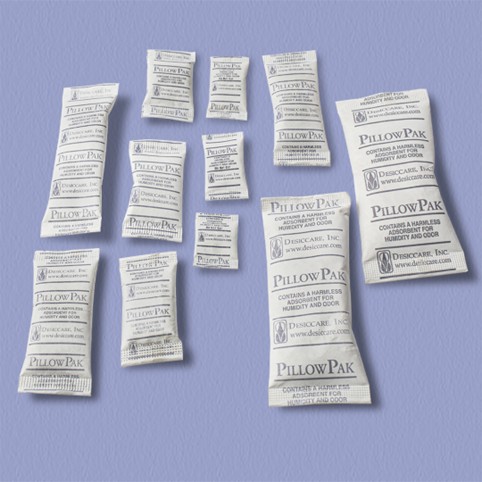
What Parameters Define the Performance of Desiccant Packs for Containers in Global Supply Chains?
Ensuring the integrity of sensitive cargo during international transport requires precise moisture control. Desiccant packs for containers play a pivotal role in preventing condensation, hydrolysis, and degradation of products ranging from pharmaceuticals to electronics. These packs are engineered to create a controlled micro-environment within shipping containers, reducing the risk of spoilage and preserving product quality throughout transit. Their performance is influenced by multiple technical and operational factors, which determine how effectively they protect cargo under varied shipping conditions.
Understanding Moisture Adsorption Capacity
The effectiveness of desiccant packs is primarily determined by their ability to adsorb and retain moisture. Factors influencing adsorption include:
- Material composition: Common desiccants such as calcium chloride, silica gel, and molecular sieves each offer distinct moisture absorption properties. Calcium chloride, for example, is highly hygroscopic, absorbing moisture rapidly and efficiently. Silica gel, on the other hand, works better in moderate humidity environments and maintains consistent adsorption over time.
- Relative humidity conditions: Packs perform differently under high versus low RH levels; selecting the correct desiccant type for specific environments is crucial. In tropical shipping routes, high RH desiccants are recommended, while temperate or dry routes require different specifications.
- Weight-to-absorption ratio: Efficient packs absorb up to 300% of their weight, ensuring sufficient protection for the cargo volume. This parameter helps determine the number and size of desiccant packs required for different container sizes.
By analyzing these parameters, logistics teams can ensure that packs are both cost-effective and technically adequate for the cargo type.
Placement and Distribution Within Containers
Optimal placement of desiccant packs enhances their efficiency by ensuring even moisture control. Key considerations include:
- Positioning near walls or corners where condensation is most likely.
- Strategic spacing to cover the entire container volume uniformly.
- Avoid areas with airflow obstruction to maintain consistent humidity reduction.
Advanced shipping protocols may include placing desiccants at multiple levels within containers or integrating them alongside cargo pallets to maximize protective coverage. Such practices help reduce localized moisture hotspots, which can cause damage even if average RH levels are within acceptable limits.
Monitoring Relative Humidity (RH) Levels
Maintaining consistent RH is critical for cargo stability, particularly for moisture-sensitive APIs, food products, or electronics. Effective packs should:
- Maintain RH levels within the safe range for the specific cargo type.
- Provide measurable reductions in condensation risk.
- Support compliance with quality standards during storage and transport.
Some advanced desiccant packs are now paired with embedded RH indicator cards, allowing personnel to verify real-time humidity levels and take corrective action if thresholds are exceeded. This approach provides an additional layer of risk mitigation for high-value shipments.
Mechanical Integrity and Packaging Design
The physical durability of the desiccant pack is vital in harsh supply chain environments. Considerations include:
- Material strength: Bags or sewn cloth bags prevent leaks while maintaining breathability.
- Size and form factor: Packs are available in sizes like 500 g or 1500 g, suited to container volume and cargo type.
- Compliance standards: Certified under U.S. FDA, MIL Spec 3464, EU RoHS, and REACH, ensuring that packs meet global regulatory requirements.
Durable packaging design is especially important for containers subject to long transit times, vibration, and stacking pressures, where fragile packs could rupture, compromising moisture control.
Chemical Stability and Safety Compliance
Performance also depends on chemical reliability and regulatory adherence:
- Calcium chloride absorbs moisture efficiently without releasing harmful byproducts.
- Compliance with FDA and EU regulations ensures safety in pharmaceutical and food transport.
- Certified desiccants reduce contamination risk while meeting international shipping standards.
Regular chemical stability testing ensures that the desiccant maintains consistent absorption capacity throughout its shelf life and under varied transport conditions, reinforcing cargo safety.
Cargo Dry Pak Efficiency
A study conducted on Cargo Dry Pak (500 gm) in pharmaceutical shipments demonstrated its high adsorption capability and uniform moisture control in standard shipping containers. The calcium chloride-based pack absorbed over 300% of its weight in moisture, reducing RH fluctuations and preventing condensation over a 30-day transit period. Its performance verified compliance with FDA and MIL Spec standards. Additional observations highlighted that strategic placement near container walls improved moisture distribution significantly, minimizing risk for moisture-sensitive APIs.
Integrating Desiccant Packs into Global Supply Chains
Efficient use of desiccant packs requires:
- Evaluating container size and cargo type to determine pack quantity.
- Selecting the right desiccant material for expected RH conditions.
- Monitoring RH indicators to validate moisture control.
- Ensuring packs are certified for international shipping compliance.
By following these protocols, companies can safeguard sensitive products, reduce shipping losses, and enhance overall supply chain reliability.
Advanced Considerations for Sensitive Cargo
Certain cargo types, such as biologics, electronics, and high-value foods, require specialized desiccant strategies:
- Biologics: Require ultra-low RH fluctuations to prevent protein degradation.
- Electronics: Sensitive to condensation and oxidation, needing desiccants with rapid moisture adsorption.
- Pharmaceutical APIs: Must comply with stability testing protocols and GMP guidelines.
Understanding the specific requirements for each product category ensures that desiccant packs deliver optimal protection while meeting regulatory expectations.
Ending Note:
Selecting an experienced and technically proficient supplier is critical. Adsorbtek Solutions Inc. provides high-performance desiccant packs for containers, designed for global logistics, with certifications including FDA, MIL Spec, RoHS, and REACH. Our packs are optimized for moisture control efficiency and reliability across multiple supply chain environments. Partnering with our best desiccant suppliers ensures consistent quality, validated technical performance, and reduced shipping risks for sensitive products worldwide.
Safeguard your container shipments with expert-grade desiccant packs. Contact Adsorbtek Solutions Inc. today for tailored solutions and technical support.
FAQs:
- What determines the effectiveness of desiccant packs for containers?
Moisture adsorption capacity, relative humidity range, material type, and pack placement influence performance.
2. How should desiccant packs be placed in shipping containers?
Position near walls, corners, and at multiple levels to maintain uniform humidity control.
3. Which desiccant materials are most effective for global supply chains?
Calcium chloride, silica gel, and molecular sieves are commonly used based on moisture and cargo requirements.
4. How is compliance ensured for desiccant packs?
Packs must meet regulatory standards like FDA, MIL Spec, RoHS, and REACH while maintaining chemical stability.
5. Can desiccant packs protect sensitive pharmaceutical and electronic products?
Yes, properly designed packs prevent condensation, hydrolysis, and oxidation, ensuring stability and product integrity.
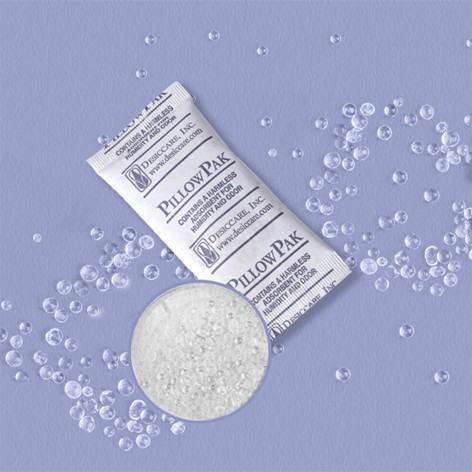
Why Is Pharma Desiccant Packaging Essential for Moisture Control in Solid Oral Dosage Forms?
Effective moisture management is critical in the pharmaceutical industry, particularly for solid oral dosage forms. Pharma desiccant packaging plays a vital role in maintaining product integrity, preventing hydrolytic degradation, and ensuring compliance with GMP and ICH stability protocols. Selecting the right desiccant system can reduce losses, extend shelf life, and safeguard API potency during storage and transportation.
Understanding Moisture Sensitivity in Solid Oral Dosage Forms
Solid oral dosage forms, such as tablets and capsules, are highly susceptible to moisture-mediated degradation. Excess humidity can cause:
- Hydrolysis of moisture-sensitive APIs
- Caking, swelling, or deformation of tablets
- Reduced dissolution rates affecting bioavailability
Pharma desiccant packaging offers a controlled micro‑environment by absorbing residual moisture within the packaging, ensuring the product remains stable throughout its shelf life. The selection of appropriate desiccant type, size, and placement is critical for maintaining low relative humidity levels in blister cavities or bottle closures.
Over storage and transit, even small variations in relative humidity can significantly impact the active pharmaceutical ingredient’s physical and chemical stability. Proper desiccant usage helps mitigate risks associated with moisture exposure, thereby preserving efficacy under ICH Q1A long-term and accelerated storage conditions.
Key Performance Parameters for Desiccant Packaging
The effectiveness of desiccant packaging is determined by measurable parameters aligned with pharmaceutical standards:
- Water Vapor Transmission Rate (WVTR): Ensures minimal moisture ingress over the product lifecycle
- Oxygen Transmission Rate (OTR): Maintains API stability in oxidation-sensitive formulations
- Desiccant Capacity and Placement: Optimized to achieve consistent micro‑environmental control
By controlling these parameters, pharma companies align packaging design with regulatory frameworks such as USP <671> for permeability testing and ICH Q1A for stability. This supports the development of validated packaging systems that withstand both accelerated (e.g., 40°C / 75 % RH) and real-time stability conditions.
Comparing Desiccant Types for Solid Dosage Forms
Different desiccant materials offer unique advantages, depending on the formulation and packaging format:
- Silica Gel: High moisture adsorption, widely compatible with tablet and capsule packaging
- Molecular Sieves: Rapid moisture uptake, ideal for highly hygroscopic APIs
- Clay Desiccants: Cost-effective and sufficient for moderate moisture control needs
Technical evaluation of these desiccants includes testing for adsorption kinetics, compatibility with APIs, and mechanical stability. For example, a study on desiccant behavior highlights that adsorption and desorption kinetics of silica gel depend greatly on humidity history (hysteresis), which influences how desiccants should be sized and placed in packaging. MDPI
Choosing the right desiccant involves balancing capacity, chemical inertness, and cost, while also ensuring the micro‑environment remains within the design specification for stability.
Integrating Desiccants into GMP‑Compliant Packaging Workflows
For packaging engineers and quality assurance teams, integrating desiccants requires rigorous validation:
- Material Qualification: Characterize desiccant chemistry and assess impurity profile
- Process Validation: Confirm compatibility with automated filling and sealing operations
- Batch Traceability: Document lot-specific performance and ensure full traceability for audits
- Routine Testing: Perform ongoing monitoring of WVTR, OTR, and residual moisture levels
These steps ensure that the desiccant system aligns with GMP standards, supports regulatory submissions, and maintains performance consistency over time. Verification of these parameters provides confidence during audits and stability studies.
Study Highlight: Controlled Humidity via Desiccant Systems
A notable peer-reviewed study explored a desiccant system using saturated salt solutions in polymer desiccant bags to regulate the internal humidity of containers for solid dosage forms. PubMed In this work, bags made from different polymers were loaded with salts that maintain a defined equilibrium relative humidity, enabling long-term control of the internal container environment with smaller desiccant sizes. This research validates how advanced desiccant designs can maintain stable humidity levels in real pharmaceutical packaging, making them practical for tablets and capsules that are sensitive to moisture.
Case Applications in Solid Oral Pharmaceuticals
Pharma desiccant packaging is widely applied in real-world scenarios for solid dosage forms:
- Hygroscopic Tablets: Maintain active drug potency by regulating internal humidity
- Moisture-Sensitive Capsules: Prevent clumping and morphological changes during transit
- Stability-Sensitive Formulations: Combine desiccants and barrier cartons to support long-term ICH Q1A stability
These use cases show how carefully engineered desiccant systems deliver meaningful benefits: improving shelf life, reducing degradation, and ensuring patient safety.
Regulatory and Quality Assurance Implications
Proper desiccant packaging directly supports regulatory compliance:
- Documentation of desiccant fill, performance data, and stability integration
- Demonstrated efficacy under ICH Q1A accelerated and long-term protocols
- Support for GMP inspections through validated traceability and quality audits
- Alignment with pharmacopeial limits for extractable and leachable components
Manufacturers relying on robust desiccant systems can better manage risk, reduce product returns, and meet international regulatory requirements.
Closing Note:
Working with a specialized provider offers strategic advantages. Adsorbtek Solutions Inc. delivers USFDA-approved, custom pharma desiccant packaging solutions tailored for solid oral dosage forms. Our desiccants are optimized for optimal capacity, minimal residual moisture, and seamless integration into pharmaceutical workflows. As a trusted partner and pharma desiccant supplier, we collaborate with R&D, quality, and packaging engineers to validate performance, provide technical documentation, and support stability studies. Our expertise helps manufacturers confidently design moisture-controlled packaging that aligns with both regulatory requirements and product quality goals.
Get in touch with Adsorbtek Solutions Inc. to evaluate your moisture control strategy and implement validated desiccant packaging solutions for your solid oral dosage products.
FAQs:
1. Why is desiccant packaging important for solid oral dosage forms?
It maintains low humidity levels, preventing hydrolysis and physical changes in tablets and capsules.
2. What types of desiccants are used in pharma packaging?
Silica gel, molecular sieves, and clay desiccants are selected based on moisture sensitivity of the API.
3. How does desiccant packaging support GMP and ICH compliance?
It ensures controlled micro-environments, validated traceability, and alignment with stability testing protocols.
4. Can desiccant bags extend shelf life of tablets?
Yes, by reducing moisture ingress and preventing degradation, they preserve API potency and physical integrity.
5. How do manufacturers choose the right desiccant system?
Through technical evaluation of WVTR, OTR, chemical compatibility, and packaging format requirements.
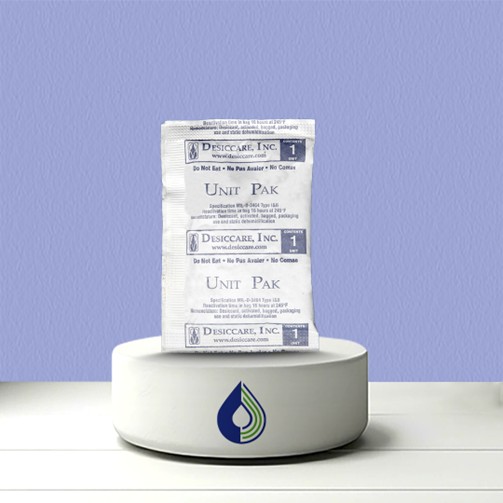
How Can Molecular Sieve Unit Pak Improve Shelf Life Consistency Across Global Distribution?
Pharmaceutical and moisture-sensitive products face significant challenges during long-distance shipping. Controlled humidity is crucial to prevent degradation, hydrolysis, or reduced potency of active ingredients. Molecular sieve unit pak provides reliable moisture adsorption in varying climatic conditions, ensuring product integrity throughout global distribution channels.
Precise Moisture Adsorption for Extended Shelf Life
Humidity fluctuations during storage and transport can accelerate chemical reactions, especially in hygroscopic APIs and nutraceuticals. Molecular sieve unit packs are engineered with high-quality zeolites capable of adsorbing water molecules even at low relative humidity.
- Maintains internal container RH within safe limits
- Protects moisture-sensitive formulations, powders, and tablets
- Reduces hydrolytic degradation, extending product shelf life
By maintaining micro-environmental stability, these unit paks support consistent drug efficacy during transit and storage, aligned with USP and ICH stability requirements.
Optimized Design for Container Integration
Efficient distribution relies on consistent packaging performance. The molecular sieve unit pack is designed to fit seamlessly into bottles, drums, or bulk containers without compromising workflow.
- Compact sizing ensures even placement in container spaces
- Non-toxic, stable materials compatible with pharmaceutical packaging
- Unit-based options provide scalability for varying container volumes
This modular approach allows manufacturers to customize moisture control for different shipment sizes, guaranteeing uniform protection. The uniform design also minimizes the risk of movement during transit, preventing uneven adsorption and maintaining product integrity.
Performance Under Extreme Conditions
Global distribution exposes products to temperature and humidity extremes, from tropical heat to arid cold storage environments. Molecular sieve unit paks maintain adsorption capacity across a wide temperature range, ensuring products reach end-users in optimal condition.
- High thermal stability prevents collapse or loss of adsorption capacity
- Maintains consistent moisture control across multiple transit points
- Compatible with both automated filling lines and manual packaging
Studies on international shipments demonstrate that molecular sieve unit paks maintain internal RH below critical thresholds during multi-week sea and air transport, effectively preventing condensation and microbial growth in packaging.
Compliance With Regulatory Standards
For pharmaceutical applications, adherence to FDA, EU, and military standards is essential. Molecular sieve unit packs are manufactured under strict quality control protocols, meeting global regulatory requirements.
- U.S. FDA approved for safe use in pharmaceutical and nutraceutical packaging
- Compliant with EU regulations and RoHS standards
- Supports documentation for GMP and ICH stability protocols
Such compliance ensures that packaging solutions not only protect products but also support regulatory inspections and audits. These validations are particularly critical for biologics, probiotics, and semi-solid formulations where moisture sensitivity is high.
Integration With Automated Packaging Systems
Modern production lines require desiccants that are compatible with automated filling, capping, and sealing machinery. Molecular sieve unit paks are engineered for uniform size and mechanical stability, allowing seamless integration into high-speed workflows.
- Consistent weight and dimensions facilitate robotic placement
- Reduces downtime caused by desiccant misalignment or spillage
- Compatible with standard bottle types, drums, and bulk containers
Automation support helps manufacturers maintain productivity without compromising moisture control quality. Technical collaborations between suppliers and packaging engineers optimize canister placement, reducing manual handling and increasing line efficiency.
Performance Monitoring and Validation
Continuous validation of adsorption efficiency is critical for global shipments. Molecular sieve unit packs provide measurable performance indicators to verify moisture control.
- Laboratory-tested adsorption rates for varying RH conditions
- Saturation monitoring through periodic quality checks
- Data-supported assurance of shelf life consistency
Monitoring protocols include gravimetric testing, RH probes within shipping containers, and periodic sampling of packaged products. Documentation from these tests ensures traceable performance, reinforcing confidence in regulatory submissions and global logistics reliability.
Pharmaceutical Global Distribution
A leading pharmaceutical manufacturer recently integrated molecular sieve unit packs in their solid oral dosage shipments to multiple continents. Accelerated and real-time stability testing demonstrated that containers equipped with unit paks consistently maintained relative humidity below 5% RH over six weeks, preventing API degradation and extending shelf life.
That molecular sieve unit paks provide superior moisture control compared to standard silica gel desiccants, particularly in tropical and high-humidity environments. This highlights the importance of optimized desiccant placement and validated adsorption performance in maintaining product quality across global supply chains.
In Closing:
Selecting a reliable supplier ensures consistent quality and technical support. At Adsorbtek Solutions Inc., our molecular sieve unit packs are engineered for optimal performance in pharmaceutical, nutraceutical, and sensitive industrial applications. Our solutions provide precise moisture control while maintaining compliance with global standards. By choosing our molecular sieve pillow pak, clients receive a validated moisture control solution that enhances product longevity, supports automated packaging, and ensures safe distribution across global markets.
Contact Adsorbtek Solutions Inc. today to integrate high-performance molecular sieve unit paks into your supply chain and maintain shelf life consistency worldwide.
FAQs:
1.What is a molecular sieve unit pack used for?
It absorbs moisture in pharmaceutical and sensitive products, maintaining stability during storage and transit.
2. How does it improve shelf life across global distribution?
Controlling internal humidity prevents degradation and hydrolysis of moisture-sensitive formulations.
3. Can molecular sieve unit packs work in extreme conditions?
Yes, they maintain adsorption efficiency in high humidity and varying temperature conditions worldwide.
4. Are these unit paks compliant with regulatory standards?
Yes, they meet FDA, EU, RoHS, and GMP requirements for pharmaceutical applications.
5. Can molecular sieve unit packs integrate with automated packaging lines?
Yes, they are engineered for uniform size and stability, compatible with high-speed automated systems.
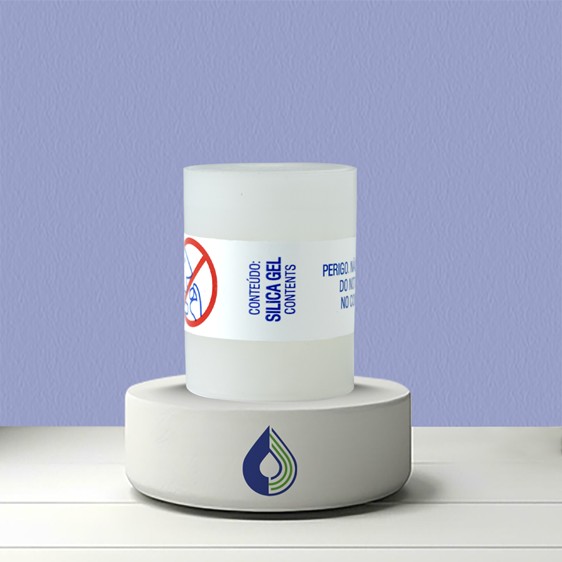
How Can Silica Gel Canister Packaging Designs Integrate With Automated Filling and Sealing Lines?
Effective moisture management is crucial in pharmaceutical logistics. Silica gel canister packaging offers controlled adsorption to protect sensitive tablets, capsules, probiotics, and nutraceuticals from humidity during storage and transport. Integration with automated filling and sealing lines enhances operational efficiency while maintaining compliance with GMP and USP <670> standards. Proper packaging not only safeguards product stability but also reduces operational delays caused by moisture-induced damage, ensuring smooth global supply chain operations.
Optimizing Canister Design for Automated Lines
Before integration, packaging design must accommodate high-speed machinery. Canister dimensions, material flexibility, and labeling must align with robotic filling systems. Key considerations include:
- Uniform canister sizes for consistent feeding and alignment.
- Smooth surfaces to prevent jamming on conveyor belts.
- Proper venting to allow controlled moisture absorption without compromising seal integrity.
- Color-coded or visually distinguishable canisters for easier automated sorting.
Designing canisters with these features reduces downtime, prevents mechanical failures, and ensures accurate dose protection during production. In large-scale operations, slight misalignment can cause jams or inconsistent moisture control; optimized canister design minimizes such risks.
Material Selection and Adsorbent Efficiency
Selecting the appropriate adsorbent is essential for performance under automated workflows. Canisters can feature:
- Cobalt-free indicating silica gel that changes color when saturated.
- Molecular sieves for enhanced water adsorption in high-humidity environments.
- Activated carbon blends to neutralize odors and maintain product stability.
- Multi-layer encapsulation to prevent dusting and maximize active surface area.
These materials must withstand high-speed handling and vibration without dusting or degradation, ensuring the adsorbent’s efficiency is preserved throughout filling, sealing, and storage processes. Research indicates that canisters using molecular sieves reduce relative humidity spikes inside containers by up to 40% in simulated warehouse conditions, improving the shelf-life of moisture-sensitive APIs. Source: Packaging Technology & Science, 2021
Automated Filling: Synchronization and Accuracy
Integrating silica gel canisters into filling lines requires precise synchronization. Systems must handle rapid placement without damaging the product or canister. Critical parameters include:
- Conveyor speed and timing for robotic insertion.
- Canister orientation sensors to ensure proper placement in bottles or containers.
- Compatibility with high-speed capping machines to maintain airtight seals.
- Adaptive line software to detect saturation indicators and route canisters accordingly.
Correct automation improves throughput and guarantees uniform moisture protection for all products. For instance, in trials with automated multi-line bottling systems, canister misplacement was reduced by 90% using orientation sensors, eliminating product spoilage and reducing operational waste.
Sealing and Packaging Integrity
Seal quality is a key factor for automated operations. Canister packaging must maintain integrity under mechanical pressure and environmental stress. Design strategies include:
- Tamper-evident lids that lock securely during robotic sealing.
- Compression-resistant outer shells that resist deformation during transport.
- Compatibility with secondary packaging, such as blister packs or bottles.
- Incorporation of moisture-indicating films to confirm seal efficacy post-automation.
Maintaining sealing integrity ensures product stability, compliance with USP <670>, and prevents exposure to external moisture. Automated sealing verification systems can further enhance quality assurance by identifying defective seals in real-time.
Real-World Applications in Pharma
Automated integration of silica gel canisters is widely applied across pharmaceuticals and nutraceuticals:
- Solid oral dosage forms like tablets and capsules.
- Probiotics and enzyme formulations are sensitive to moisture.
- Multi-component drug products require precise humidity control.
- Specialty formulations such as chewables, effervescent tablets, and high-potency APIs.
Data from recent case studies indicate that canister placement within automated bottling lines reduces relative humidity variation inside containers by up to 30%, ensuring consistent shelf life and product quality. Additionally, canisters with cobalt-free indicating gels allow operators to monitor moisture levels without opening containers, maintaining aseptic integrity.
Future-Proofing Packaging for Advanced Automation
As production lines become faster, canisters must adapt:
- Lightweight, high-strength materials reduce mechanical stress.
- Modular canister sizes allow flexible line configurations.
- Integration with sensors for real-time monitoring of saturation levels.
- Compatibility with Industry 4.0 connected manufacturing systems for predictive maintenance and moisture monitoring.
This ensures packaging remains effective in next-generation automated facilities while meeting regulatory and operational requirements. The combination of real-time monitoring and adaptive design provides both performance assurance and regulatory confidence, especially for export-focused manufacturers dealing with long-haul shipping.
In Closing:
At Adsorbtek Solutions Inc., our silica gel canister packaging solutions are designed for seamless integration with automated filling and sealing lines. Each canister undergoes rigorous validation for adsorption efficiency, mechanical integrity, and compliance with FDA 21 CFR and USP <670>. By partnering with our team, manufacturers gain access to high-performance moisture control systems, tailored to meet production demands. For additional flexibility, our silica gel pillow pak options complement canisters in large-volume or specialized shipments, ensuring complete protection against humidity for sensitive products.
Connect with Adsorbtek Solutions Inc. today to optimize your automated production lines with advanced silica gel canister solutions and achieve consistent moisture control across all your shipments.
FAQs
1. What is the main advantage of silica gel canister packaging in pharmaceuticals?
It protects moisture-sensitive products like tablets, capsules, and probiotics by maintaining controlled relative humidity inside containers.
2. How can canisters integrate with automated filling lines?
They are designed for uniform size, orientation, and stability, enabling seamless robotic placement and high-speed sealing.
3. Which materials are commonly used in silica gel canisters?
Cobalt-free indicating silica gel, molecular sieves, and activated carbon blends are used for moisture adsorption and odor control.
4. How is performance verified during production?
Moisture adsorption, saturation indicators, mechanical integrity, and automated seal checks ensure consistency and compliance with USP <670>.
5. Can silica gel canisters improve the shelf life of APIs?
Yes, by controlling internal humidity, they prevent hydrolysis and maintain stability in solid oral dosage forms throughout distribution.
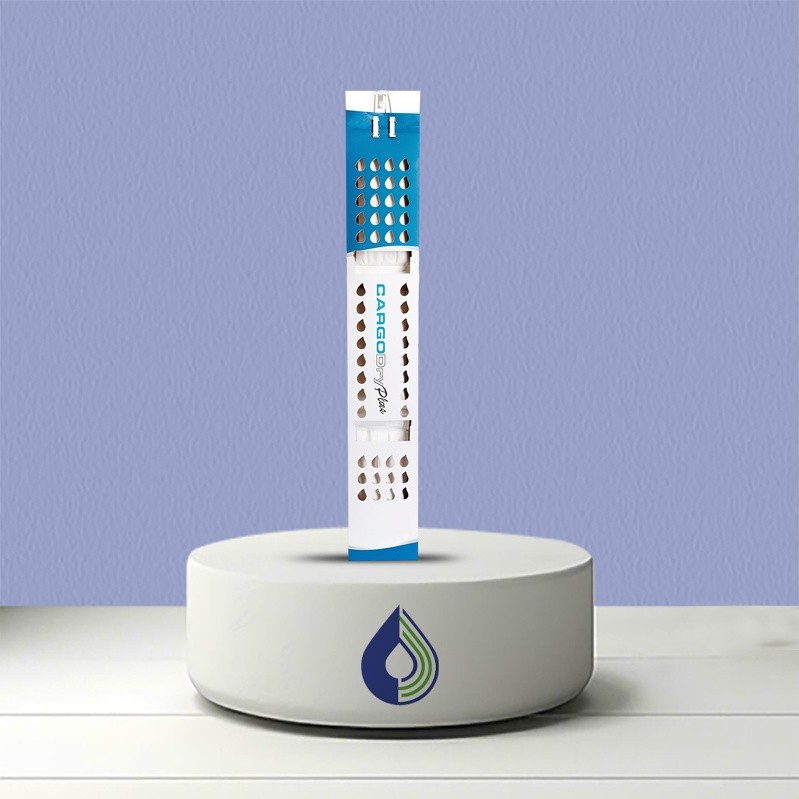
Do Desiccant Bags for Cargo Packaging Minimize Hydrolysis During Transit?
Studies indicate that approximately 10% of all cargo shipments worldwide are damaged due to container rain (condensation), a phenomenon resulting from humidity and temperature fluctuations during transit. In pharmaceutical logistics, controlling moisture is critical to preserving product stability and efficacy. Desiccant bags for cargo packaging serve as a primary defense against hydrolysis and other moisture-induced degradation mechanisms in moisture-sensitive drugs, biologics, and medical devices. Their integration into packaging aligns with regulatory standards, including GDP and ICH Q1A stability guidelines.
Hydrolysis Risk in Pharmaceutical Cargo
Hydrolysis occurs when water molecules react with sensitive compounds, compromising APIs, excipients, or finished dosage forms. Key contributors include:
- Elevated ambient humidity during storage or transit
- Condensation within sealed containers due to temperature fluctuations
- Extended transit durations across variable climates
- Exposure to unconditioned storage areas during loading and unloading
Even minor moisture exposure can reduce drug potency, alter dissolution rates, and catalyze unwanted degradation reactions.
Some excipients, such as lactose, mannitol, or microcrystalline cellulose, can absorb moisture and accelerate hydrolysis of APIs in solid formulations. For biologics, hydrolysis can lead to protein denaturation, aggregation, or loss of activity, severely impacting efficacy and shelf-life.
Documented cases from logistics audits show that improper moisture control can result in 5–15% product loss over typical shipment durations if no desiccant is used.
Technical Functionality of Desiccant Bags
Desiccant bags absorb water vapor to maintain low relative humidity inside shipping containers. Selection and application require careful technical consideration.
- Material Type: Silica gel is effective at lower humidity ranges (10–50% RH). Molecular sieves are preferred under high humidity conditions (>70% RH). Activated clay works effectively under moderate humidity (40–60% RH). For highly hygroscopic compounds, molecular sieve-based desiccants provide extended protection in tropical or high-moisture transit conditions.
- Capacity Calculation: Determining desiccant quantity involves container volume, anticipated transit RH, expected duration, and sensitivity of the drug product. Formulas exist for calculating the grams of desiccant required per cubic meter of container space, factoring in temperature-induced moisture load.
- Placement Strategy: Bags should be positioned near high-risk areas such as corners, pallet tops, and around moisture-sensitive product units. In multi-layered pallets or bulk shipments, desiccants distributed evenly across layers ensure uniform moisture absorption.
- Material Compatibility: Regulatory-grade desiccants must be inert, non-toxic, and compatible with drug surfaces and packaging films. Food-grade or pharmaceutical-grade silica gel is preferred for oral solid dosage forms, while moisture-sensitive biologics require desiccants that do not introduce particulate contamination.
Packaging design also impacts desiccant effectiveness. Containers with high water vapor transmission rates (WVTR) or improperly sealed cartons can compromise moisture protection. Proper desiccant selection and placement are essential for optimal results.
Performance Validation and Monitoring
- Colorimetric humidity indicators integrated into desiccant bags provide visual confirmation of moisture absorption. They change color when relative humidity exceeds predefined thresholds, for example, 60% RH.
- RH data loggers can continuously record environmental conditions during transit, providing audit-ready evidence of moisture control. These data support GDP compliance and regulatory inspections.
- Studies show that silica gel-based desiccants in blister packs can reduce moisture-induced degradation by over 80% over 12 months at 25°C/60% RH. Similar research indicates molecular sieves reduce hydrolysis in highly hygroscopic APIs by up to 90% over six months under tropical conditions.
Using these monitoring tools allows proactive intervention if moisture levels rise unexpectedly, helping avoid batch rejection, recalls, or stability failures.
Integration with Pharmaceutical Packaging Systems
Desiccant bags function optimally when combined with other protective measures:
- Primary and secondary packaging films with defined WVTR (Water Vapor Transmission Rate)
- Sealed unit dose or blister packs to minimize moisture ingress
- Temperature-controlled containers for biologics and highly sensitive compounds
- Shock-absorbent or barrier pallets to reduce mechanical stress and potential micro-leakage
Combining these approaches with desiccants ensures a multi-layered moisture protection system. For highly moisture-sensitive biologics or lyophilized formulations, integration is critical for maintaining stability during long-haul shipments and cross-border logistics.
Pharmaceutical companies increasingly incorporate moisture-mapping studies into container qualification to determine optimal desiccant placement and capacity, further reducing hydrolysis risk.
Regulatory Alignment and Quality Assurance
Pharmaceutical logistics is tightly regulated, and moisture control measures must comply with established guidelines:
- ICH Q1A outlines stability testing requirements and acceptable humidity ranges for APIs and finished products.
- GDP mandates that all shipping and storage conditions be controlled, monitored, and documented.
- USP and EP standards specify material compatibility, moisture limits, and testing protocols for pharmaceutical packaging.
Proper use of desiccant bags, validated via adsorption isotherms and container RH mapping, demonstrates compliance and ensures product quality. Detailed records are critical during inspections and support product release decisions by QA and QC teams.
Case Studies
Ending Note:
At Adsorbtek Solutions Inc., we provide high-performance desiccant bags for cargo packaging engineered to safeguard moisture-sensitive pharmaceuticals throughout transit. Our scientifically validated solutions meet regulatory requirements and integrate seamlessly with standard pharma packaging systems. By preventing hydrolysis and maintaining API integrity, our products help companies reduce product loss, maintain batch quality, and support compliance. For companies seeking a trusted moisture absorber for shipping in the USA, Adsorbtek Solutions Inc. delivers performance-driven, industry-aligned solutions.
Contact us to implement precise moisture control and ensure the stability of your pharmaceutical shipments across the supply chain.
FAQs:
1. What are desiccant bags for cargo packaging?
Desiccant bags are moisture-absorbing inserts that reduce humidity in shipping containers to prevent product degradation.
2. How do desiccant bags prevent hydrolysis in pharmaceuticals?
They absorb water vapor, maintaining low relative humidity and protecting APIs and formulations from hydrolytic reactions.
3. Which materials are commonly used in desiccant bags?
Silica gel, molecular sieves, and activated clay are widely used, each suited for specific humidity conditions.
4. Can desiccant bags be used with biologics?
Yes, properly selected desiccants help protect moisture-sensitive biologics from denaturation, aggregation, or activity loss during transit.
5. How is the performance of desiccant bags monitored?
Color-changing indicators and RH data loggers track humidity levels to ensure consistent moisture control during transport.
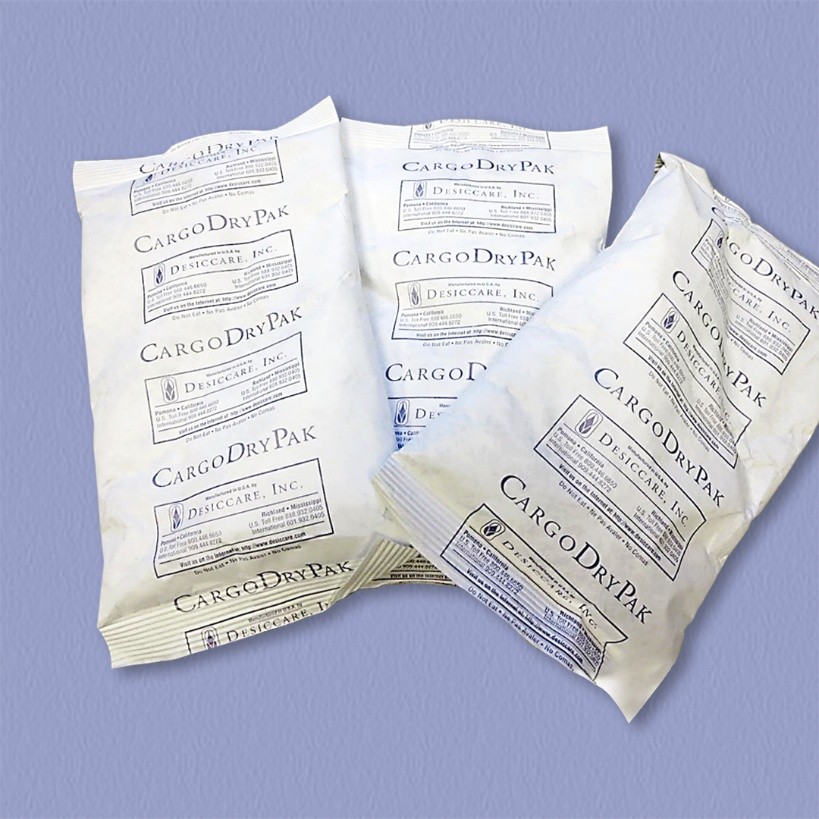
How Cargo Moisture Control Packaging Helps Companies Prevent Shipping Losses
Maintaining the integrity of pharmaceutical shipments is a critical operational priority. Exposure to elevated relative humidity can compromise active pharmaceutical ingredients, reduce shelf life, and affect dosage form performance. Moisture control products stabilize micro-environmental conditions inside containers and secondary packaging. By controlling humidity, they prevent hydrolysis in sensitive APIs, maintain dosage consistency, and ensure compliance with GMP, FDA, and EMA standards.
Key Humidity Risks in Pharmaceutical Shipping
Global shipments often cross multiple climate zones, resulting in temperature swings and condensation inside containers. Key risks include:
- Swelling, sticking, or loss of friability in solid oral dosage forms.
- Changes in viscosity or phase separation in semi-solid formulations.
- Aggregation or reduced potency in biologics.
Even short-term exposure to high relative humidity can accelerate degradation pathways, particularly hydrolysis in moisture-sensitive APIs. Liquid formulations and lyophilized powders are highly susceptible to condensation, which may trigger chemical instability or microbial contamination if packaging integrity is compromised.
Monitoring and mitigating these risks is essential for quality control teams and packaging engineers to meet ICH Q1A stability protocols.
Advanced monitoring tools, such as data loggers and wireless RH sensors, can track conditions throughout the shipping process. These technologies allow companies to validate shipping lanes and demonstrate compliance with GMP and regulatory standards.
High-Barrier Packaging Materials for Effective Moisture Protection
Packaging performance relies on material selection tailored to product sensitivity:
- Laminated aluminum tubes and multi-layer composite films provide high barrier properties against moisture and oxygen, verified under USP <671> permeability standards.
- High-density polyethylene liners and container coatings reduce water vapor transmission rates.
- Proper combination of primary and secondary packaging ensures products remain within validated environmental limits during storage and transit.
Barrier materials also support high-speed filling lines without compromising seal integrity or product sterility. In ophthalmic gels and semi-solid ointments, low-permeability tubes prevent oxidation and maintain viscosity, preserving both quality and regulatory compliance.
By selecting materials based on WVTR (Water Vapor Transmission Rate) and OTR (Oxygen Transmission Rate) data, packaging engineers can optimize protection for each formulation type.
Selecting the Right Desiccant Systems for Cargo
Desiccant selection is critical in pharmaceutical logistics:
- Silica gel: Maintains mid-range RH, suitable for tablets and blister packs.
- Molecular sieves: Low RH adsorption, ideal for highly sensitive APIs and biologics.
- Clay-based desiccants: Cost-efficient protection for less sensitive formulations or shorter shipment durations.
Each desiccant must be validated through controlled studies, measuring adsorption capacity, breakthrough curves, and compatibility with container materials. For example, molecular sieves are often chosen for hygroscopic APIs that require near-zero moisture environments, while silica gel is preferred for solid oral dosage forms with moderate sensitivity.
Case studies show that correctly selected desiccants can reduce moisture-induced product degradation by up to 40% over standard shipping cycles.
Desiccant placement within packaging is also crucial. Sachets may be positioned within blister cavities, bottle closures, or container headspaces, depending on the dosage form. Canisters and coils are used for larger containers to provide uniform moisture adsorption throughout the cargo.
Practical Applications of Moisture Control in Pharma Cargo
Certain dosage forms require specialized solutions. Ophthalmic gels and semi-solid formulations demand low-permeability laminate tubes combined with desiccant sachets to prevent oxidative degradation and viscosity changes.
In solid oral dosage forms, silica gel or molecular sieves are placed inside bottle closures or blister cavities to maintain controlled RH levels, mitigating hydrolysis and preserving potency throughout ICH stability testing periods.
Pharmaceutical companies shipping products internationally must also consider transit duration, storage conditions, and container type. Multi-modal shipments, combining sea, road, and air transport, expose cargo to fluctuating temperature and humidity conditions. Advanced packaging designs, including laminated films with integrated desiccants, ensure that products remain stable regardless of transit complexity.
Compliance and Documentation for Shipping Integrity
Regulatory compliance requires documentation of all moisture control measures, including:
- Container qualification and desiccant validation
- Environmental monitoring protocols using data loggers
- Evidence of GMP adherence
Maintaining detailed records of desiccant placement, quantity, and observed environmental conditions during shipment supports audits and regulatory inspections.
Demonstrating adherence to ICH Q1A stability testing and USP <671> standards not only protects product quality but also strengthens confidence among supply chain partners. Documented compliance also mitigates the risk of shipment delays, product recalls, and financial losses.
Final Look:
Effective cargo moisture control packaging in the USA reduces degradation, ensures regulatory compliance, and prevents costly shipment losses. At Adsorbtek Solutions Inc., we deliver tailored solutions designed for pharmaceutical applications. Our desiccants, high-barrier packaging materials, and validated container systems maintain product integrity from production to end-use. By leveraging our expertise, pharmaceutical companies can secure their supply chains and ensure consistent product quality. Our solutions are validated against industry standards and designed to integrate seamlessly into existing packaging workflows. Through careful selection of desiccants and barrier materials, we help clients minimize product risk, extend shelf life, and meet regulatory expectations for global distribution.
Contact Adsorbtek Solutions Inc. to implement advanced moisture management solutions in your shipping operations.
FAQs:
Q1: What is cargo moisture control packaging?
It is specialized packaging designed to maintain controlled humidity and protect pharmaceutical shipments.
Q2: Why are moisture control products important in pharma shipping?
They prevent degradation of APIs, maintain potency, and ensure compliance with regulatory standards.
Q3: How do desiccants work in shipping containers?
Desiccants absorb moisture in the container, stabilizing relative humidity to protect sensitive formulations.
Q4: Which packaging materials provide high moisture protection?
Laminated aluminum tubes, multi-layer films, and high-density liners offer low permeability and robust protection.
Q5: How can companies ensure compliance with moisture control standards?
By validating packaging systems, monitoring conditions, and adhering to GMP, ICH, and USP guidelines.

Why Are Molecular Sieve Unit Paks Critical in High-Value Pharma Exports?
Studies report that the global molecular sieve desiccants market was valued at about USD 3.68 billion in 2024, driven strongly by pharmaceutical demand for precise moisture control. Pharmaceutical shipments with moisture-sensitive formulations require exacting protection. A molecular sieve unit pak provides ultra-low relative humidity environments that suppress hydrolysis, oxidation, and microbial growth. These packs are engineered to meet GMP packaging compliance under FDA and EMA guidelines. For high-value exports of biologics, peptides, or sterile creams, molecular sieve systems are not optional but essential for maintaining API potency and product safety during transport.
Controlled Adsorption Performance in Pharma Packaging
Molecular sieves outperform traditional desiccants due to their crystalline pore structure. By selectively adsorbing water molecules at very low relative humidity levels, they maintain conditions below 10% RH inside packaging.
Performance studies have demonstrated that molecular sieves can reduce moisture uptake by 40% compared with silica gel under accelerated stability conditions. This consistency makes them suitable for antibiotics, peptides, effervescent formulations, and other APIs where hydrolysis risk is high.
Unlike bulk silica or clay-based desiccants, molecular sieves maintain adsorption efficiency even at elevated temperatures. This characteristic is particularly important during long-distance transport through tropical or high-humidity regions, where standard desiccants can lose effectiveness. For products requiring strict shelf-life stability, molecular sieves create a controlled environment that significantly lowers out-of-specification risks.
GMP Relevance in Export Packaging Systems
Good Manufacturing Practice (GMP) requirements extend beyond drug formulation into packaging integrity. For desiccant integration, compliance includes:
- Cleanroom-grade production of unit paks to minimize particulate risk.
- Complete batch traceability from raw molecular sieve material to finished product.
- Validated adsorption profiles documented in ICH stability studies.
- Compatibility testing with APIs and excipients to ensure no extractables or leachables.
These measures reduce the possibility of deviations during audits and inspections. With international regulators focusing on packaging as part of product quality, the use of compliant desiccants has become a critical step for global exports. GMP alignment demonstrates that the entire packaging system, not just the drug substance, has been designed with product safety and compliance in mind.
Addressing Hydrolysis in High-Value APIs
Hydrolysis is a major degradation pathway for sensitive molecules. Even trace levels of moisture can destabilize proteins, nucleotides, and small molecules, reducing potency and bioavailability. Molecular sieves adsorb water vapor to below detectable levels, effectively suppressing hydrolytic breakdown.
Export data on monoclonal antibody vials showed that shipments packaged with molecular sieve desiccants retained stability for 12 months longer compared with controls lacking sorbents. This performance reinforces their role in safeguarding multimillion-dollar exports.
For injectable therapies and biologics, where cold-chain logistics already pose challenges, desiccant systems create a second layer of protection. The stability gained during extended transport not only improves patient safety but also reduces financial losses from rejected batches at receiving facilities.
Integration into Export Logistics
Pharmaceutical exporters require solutions that integrate seamlessly into operational workflows. Molecular sieve unit paks are compact, dust-free, and FDA-cleared for indirect product contact, making them suitable for secondary and tertiary packaging.
Key operational benefits include:
- Space-efficient design that does not reduce shipment payload.
- Low-dust construction prevents contamination during handling.
- Performance validated across ICH climate zones I–IV, ensuring global reliability.
Unit paks can be used across multiple container types, including blister cartons, bulk drums, and sealed shipping crates. Their lightweight format ensures minimal impact on freight costs while still delivering robust protection. By reducing variability across different export routes and climates, molecular sieves simplify logistics planning for pharma companies shipping to multiple global markets.
Alignment with Global Regulatory Frameworks
Both the FDA and EMA emphasize packaging systems that preserve stability during transit. Molecular sieve desiccants, supported by validation data, form part of the container-closure system documentation required for regulatory approval.
Supporting data typically includes adsorption isotherms, accelerated aging studies, and compliance with USP <671> for packaging performance. Their established acceptance in regulatory submissions positions them as trusted components in pharma exports.
For exporters targeting multiple jurisdictions, using molecular sieve unit paks reduces the burden of revalidating packaging systems for each region. Their acceptance in regulatory filings accelerates market release timelines and strengthens confidence during inspections.
In The End:
High-value pharmaceuticals require packaging systems that eliminate degradation risks. Molecular sieves, with validated moisture adsorption, GMP-oriented production, and regulatory acceptance, deliver this assurance. Beyond bulk shipments, the same performance extends to smaller pack sizes, such as the molecular sieve pillow pak in the USA, designed for use in cartons and vials. At Adsorbtek Solutions Inc., we engineer molecular sieve desiccant solutions that align with GMP and international export standards. Our expertise ensures reliable protection of pharmaceutical products against hydrolysis, oxidation, and transit-related instability.
Contact us today to explore how our molecular sieve solutions can secure your high-value pharmaceutical exports.
FAQs:
Q1. What makes molecular sieve unit paks suitable for pharma exports?
They maintain ultra-low humidity, protect APIs from hydrolysis, and meet GMP packaging requirements.
Q2. How do molecular sieves differ from silica gel in pharma packaging?
Molecular sieves adsorb moisture at lower relative humidity levels, making them more reliable for sensitive APIs.
Q3. Can molecular sieve unit paks be used in cold chain logistics?
Yes, they remain effective at low temperatures and complement cold storage by controlling micro-level moisture.
Q4. Do molecular sieve desiccants meet global regulatory requirements?
Yes, they comply with FDA, EMA, and USP standards for pharmaceutical packaging and stability.
Q5. Where are molecular sieve unit paks applied in pharma exports?
They are used in blister cartons, vials, bulk drums, and sealed shipping containers.
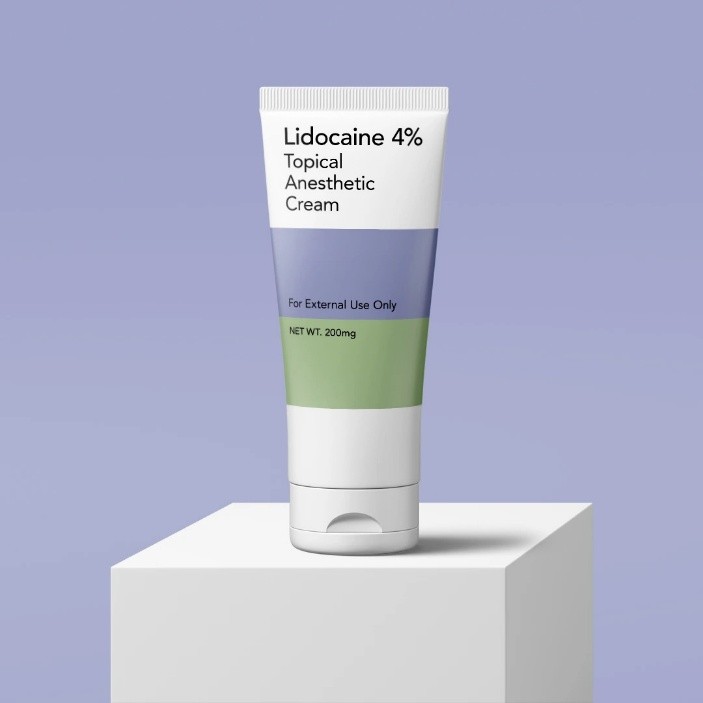
How Can Laminated Tubes for Pharma Be Customized for GMP Packaging Compliance?
Studies show that the medical packaging laminated tubes market is projected to reach USD 2.5 billion by 2025, expanding at nearly 6–7% CAGR through 2033, with pharmaceutical applications driving much of this growth due to GMP packaging demands. Maintaining drug stability during storage and distribution depends heavily on primary packaging systems. Among these, laminated tubes for pharma provide a proven solution for semi-solid formulations, dermatological creams, and oral gels where both barrier integrity and GMP compliance are critical. Their multilayer structure, combining polymers with aluminum or EVOH layers, offers strong resistance to oxygen ingress, moisture migration, and microbial contamination, which are high-risk factors for product degradation.
Pharmaceutical companies require packaging that is both functional and fully compliant with GMP standards. This means customization in design, material selection, and manufacturing controls to preserve product stability while ensuring regulatory readiness.
Structural Design with Barrier Adaptability
Laminated tubes are built using multiple layers, each layer serving a distinct role. The outer polymer provides rigidity and printable surface area. The barrier layer, often aluminum foil or EVOH, delivers low permeability to gases and water vapor. The innermost contact layer must comply with pharmacopeial standards, ensuring compatibility with APIs and excipients.
Design adjustments in laminate thickness, seal integrity, and barrier selection can be tailored to the sensitivity of the formulation. For moisture-sensitive drugs, studies confirm that barrier-optimized laminated tubes achieve up to 60% lower water vapor transmission compared to monolayer polymers, significantly reducing hydrolysis risks.
GMP-Oriented Production Controls
Customization extends beyond structure into the production process. To align with GMP, laminated tube manufacturing integrates:
- Controlled environments to minimize microbial and particulate contamination.
- Validated sealing and crimping processes that ensure consistent tube integrity.
- Material traceability linking resin, foil, and additives with batch records.
- Stability protocols conducted under ICH climatic zone conditions to confirm long-term integrity.
These GMP-aligned practices turn laminated tubes into validated packaging systems suitable for regulated markets rather than generic containers.
Compatibility Testing with APIs
Drug packaging interaction remains a focal point of GMP compliance. Laminated tubes must undergo extractables and leachables testing to confirm that packaging materials do not compromise product purity. The choice of inner polymer layers, whether low-density polyethylene or advanced co-extrusions, must be based on non-reactivity with APIs.
For instance, in corticosteroid formulations, tubes manufactured without compatibility testing have shown migration of additives, leading to drug degradation. GMP-driven laminated tubes, validated with pharmaceutical-grade polymers, mitigate this risk and ensure chemical stability.
Custom Features for Pharma Operations
Pharmaceutical packaging engineers often demand additional functionality to meet both GMP and operational requirements. Examples include:
- Tamper-evident closures that enhance regulatory compliance and patient safety.
- Child-resistant features are designed in line with safety regulations.
- Serialization and coding are embedded in the laminate surface for full track-and-trace support.
- Metered dispensing systems that deliver dose consistency while minimizing contamination after opening.
Each of these features is validated within GMP frameworks, ensuring they do not compromise barrier performance or drug stability.
Validation and Documentation Aligned with GMP
Every customization must be supported by documented validation to meet regulatory scrutiny. Key protocols include:
- Oxygen and moisture transmission rate testing under accelerated conditions.
- Container closure integrity tests, such as vacuum decay and dye ingress.
- Extractables and leachables profiling in compliance with USP <1663> and <1664>.
These records build the evidence package that assures regulators and manufacturers that laminated tubes maintain GMP compliance across their lifecycle.
Closing Note:
Pharmaceutical packaging is no longer limited to containment; it is now an integral component of drug stability and compliance. Laminated tubes, when engineered and validated under GMP frameworks, provide strong barrier protection, compatibility assurance, and regulatory readiness. Beyond pharmaceuticals, the same technology enhances performance in personal care, where laminated tubes for cosmetics in the USA safeguard product shelf life. At Adsorbtek Solutions Inc., our focus is on tailoring laminated tube solutions to align with GMP packaging requirements. We collaborate with pharmaceutical partners to provide validated, compliant, and performance-driven tubes that protect both formulations and reputation.
Contact us today to explore customized laminated tube solutions designed for strict GMP compliance and pharmaceutical excellence.
FAQs:
1. What are laminated tubes used for in pharmaceuticals?
They are primary packaging systems designed for semi-solid drugs, ensuring barrier protection and GMP compliance.
2. Why are GMP requirements important for laminated tubes?
GMP ensures manufacturing consistency, product safety, and regulatory acceptance of laminated tubes for pharma packaging.
3. How do laminated tubes prevent drug degradation?
Their multilayer design blocks oxygen and moisture, reducing hydrolysis and preserving API stability.
4. Can laminated tubes be customized for specific formulations?
Yes, customization in barrier layers, closures, and dispensing features supports diverse formulation requirements.
5. What testing is required for GMP-compliant laminated tubes?
They undergo extractables and leachables studies, barrier performance testing, and closure integrity validation.
Search
Recent Posts






